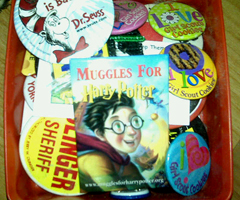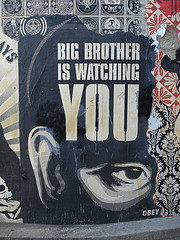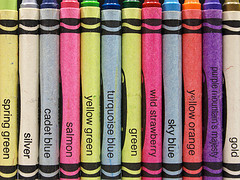Photo Writing Prompt: A Voice From the Past
October 7, 2010
 This prompt is inspired by the piece that I wrote about my high school yearbook photo back in August 2009 for Laurie Halse Anderson’s for Write Fifteen Minutes a Day (WFMAD) and that I submitted to Bedford/St. Martin’s Gallery of Writing.
This prompt is inspired by the piece that I wrote about my high school yearbook photo back in August 2009 for Laurie Halse Anderson’s for Write Fifteen Minutes a Day (WFMAD) and that I submitted to Bedford/St. Martin’s Gallery of Writing.
For this project, students choose their own photos, based on the kind of project they are completing. Here are some options students can use:
- Choose your own school picture or yearbook photos or school pictures, and write an autobiographical memoir.
- Find a photo of a famous historical figure or contemporary figure, and write your comments after completing some research on the person and the events in his or her life.
- Use the photo of a family member, and write a biographical reflection, informed by your interactions with that family member.
- Find a random photo on Flickr, and write a fictional piece about the imagined thoughts of the person in the photo.
A Voice From the Past. What would the person in the photo you have chosen say to you? What would that voice from the past tell you. Your job is to create a text from the perspective of the person in the photo. She will speak to the future, sharing something about things she has learned and what she has done.
Try freewriting on one of these questions to get started:
- What choices would the person in the picture tell you to make?
- What would the person regret that was happening when the picture was taken?
- What would the person look back on with a smile?
- What would the person wish could be different?
- What advice or warnings would the person give you?
- What would the person see now if she (or he) looked back at the photo?
- What secrets would the person confess now about life then?
- What does the person in the photo not realize yet?
- What would the person tell you about goals and dreams?
- What was important to the person in the photo? Has it changed?


 One of my cherished possessions is a Muggles for Harry Potter pin from 1999. Eric Crump gave it to me, having picked it up from the NCTE librarian. I hadn’t read a word of J. K. Rowling’s first book, but I was willing to join the anti-censorship campaign.
One of my cherished possessions is a Muggles for Harry Potter pin from 1999. Eric Crump gave it to me, having picked it up from the NCTE librarian. I hadn’t read a word of J. K. Rowling’s first book, but I was willing to join the anti-censorship campaign. 



